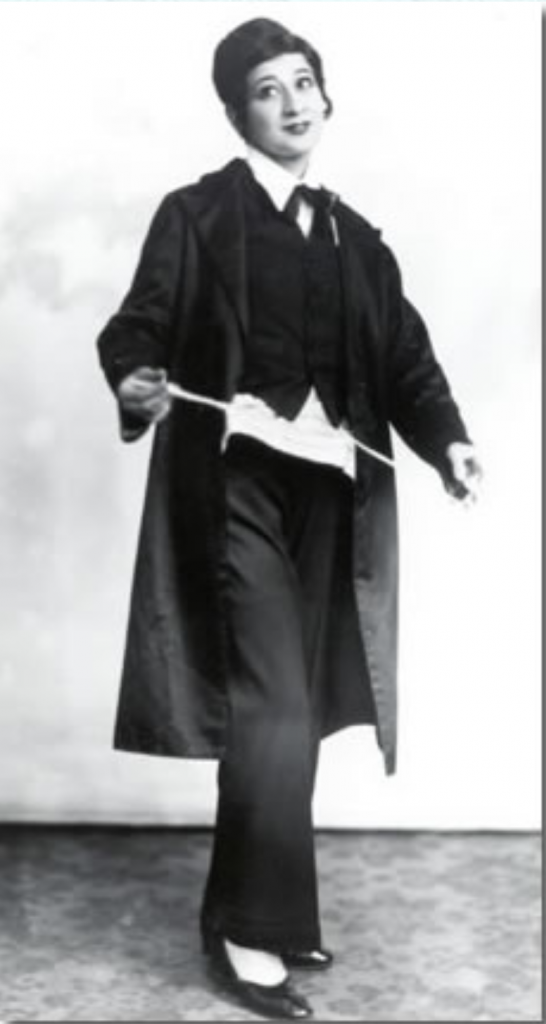By Jeremiah Lockwood, Research Fellow
Lowell Milken Center for Music of American Jewish Experience
A new multi-media offering from the Lowell Milken Center for Music of American Jewish Experience draws attention to forgotten strands of history
It’s a new year and the Lowell Milken Center for Music of American Jewish Experience at The Herb Alpert School of Music at UCLA has a remarkable offering to start things off on a sustained note of surprise and delight. The Oral History Project of American Jewish Music presents dozens of video interviews with important figures in American Jewish music, ranging from serial composer Milton Babbitt, to interwar Polish pop start turned cantor Josef Cykowsky, to diva of the Yiddish stage Mina Bern. The offerings of this new video archive are sure to have a powerful impact on research on Jewish music and American Jewish life. Beyond their research value, the videos I’ve seen so far are also charming and entertaining. The power of video to convey living personalities and the impact of first-person narratives invigorates the experience of history, offering detail of intimate memories that elude other forms of documentation.
The experience of using the Oral History Project is enhanced by a transcription tool that is aligned with the video, providing texts of the video interviews. These transcripts are search enabled, offering a tool for researchers to pinpoint moments in the videos that are relevant to their research questions. The transcript function is an audio-video parallel to the OCR text recognition tools that have revolutionized primary document research in recent years. This presentation of archival material is a landmark step towards facilitating research that takes into account oral histories with the same degree of fine comb analysis as has been reserved in the past for other, more bureaucratic and less personal forms of documentation.
In this blog post, I would like to direct the reader’s attention to an interview with Freydele Oysher (1913-2004), star of the Yiddish stage, and her husband, singer and composer Harold Sternberg that is featured in the Oral History Project. The interview was conducted by noted Jewish music scholars and record producers Neil W. Levin and Barry Serota in 1995.
Freydele Oysher is a larger-than-life character whose years of performance singing to the rafters seems to have suffused her personality with an irrepressible vividness. In her interview, amidst a litany of memories of characters from the Jewish music world, Oysher and Sternberg overlap, interrupt and beautifully complement each other. They paint a picture of a world of commerce, competition, controversy and an emotionally rewarding struggle to give voice to a style of artistic achievement centered in the communal experience of Jewish life. At moments, Oysher speaks in the voice of the jaded star, putting down competitors who shouldn’t bother to even try if they don’t have what she has, lauding her own charisma and talents that have marked her since childhood. At other times, she is filled with an irrepressible enthusiasm for the beauty of the art experience, enraptured by the memory of her brother Moishe’s talent, and exalting the qualities of soul that she poured into her performance of khazones. It was as a performer of khazones, Jewish sacred music, that Freydele excelled and was celebrated.
Freydele highlighted the unique qualities of her vocal production that made her especially suited to singing the khazones repertoire. She suggested that the chest voice, the vocal register of the female voice that is in the same range as the male tenor, was suited to the style, stating that this vocal quality brings out the neshome (soul) of the music. Unmentioned, but implied, is the fact that this area of the female voice has an androgynous quality and matches some of the timbral qualities associated with male voices. Also unexplored in this interview was the fact that Freydele was barred from performing in the synagogue by normative prohibitions on women serving as prayer leaders. Instead, she applied her talents as a liturgical musician in the Yiddish theater.

Throughout the interview, it goes completely without question that Freydele Oysher’s purview as an expert musician and public identity was completely bound up with cantorial music, a style of music that today is better known as a form of prayer leading in synagogues than as a genre of theatrical performance. However, according to Oysher and Sternberg, khazones was an integral part of Yiddish theater. Sternberg composed cantorial recitatives that were performed by both Moishe, presumably in the synagogue, and by Freydele on stage. Both brother and sister were show stopping stars, but only the brother was able to bring his powerful renditions of cantorial recitative into the “native” context for the music in synagogues. For Freydele, the dramatic power of the cantorial recitative made her performances of liturgy a perfect vehicle for the theater. Both Oysher and Sternberg recall how cantorial numbers were the curtain closers, the powerhouse pieces that were calculated to powerfully act on the audience, eliciting uncontrollable rapturous applause. Sternberg composed a setting of Ribono Shel Olam, a piece of liturgy for the ritual of counting the omer, the mystical counting of different aspects of the Divine during the weeks between the Passover and Shavuos holidays. This piece was intended for use both by Moishe and Freydele. As they discussed the piece the elderly couple were swept up in the memory of their performances and began to sing. Freydele produced a robust tone, strong in volume and tone control, and virtuosic in its presentation of idiomatic cantorial vocal techniques. As she sang, she used her hands to create sweeping gestures that managed to suggest both the bodily comportment of the cantor and the stage performer. At moments, Freydele made the kinds of hand motions used by cantors during prayer, such as characteristic gestures of supplicatory outstretched hands and the argumentative twisting of the wrist while pointing, suggestive of an advocate’s dialogue with God; and at other moments she veered towards the kinds of arm-spread, attention grabbing bodily movements associated with musical theater. Sternberg and Oysher recall how this piece garnered an eight-minute-long ovation. The pit orchestra musicians stood staring at their watches in admiration.
This recording, apparently a radio performance of Freydele singing Sternberg’s composition “Reboynu Shel Oylem” is from a 2005 reissue album, The Oysher Heritage, that also featured Moishe and Freydele’s daughter, the singer Marilyn Michaels. The recording seems to have had an organ track overdubbed onto the original source recording at the time of the reissue project.
While Freydele does not discuss the politics that kept her from being able to perform prayer music in the synagogue, she and Sternberg do talk about the controversies that attended her brother Moishe’s career. At one point, Moishe was confronted by a delegation of Rabbis who demanded that he choose either the theater or the synagogue, and cease going back and forth between the two. Moishe came up with a compromise: he would forego performances on the Sabbath and holidays and would refrain from performing in scenes where he would kiss his love interest in any role where he played the romantic lead. Freydele quoted the answer he gave to the rabbis who were seeking to create a barrier between the sensuality of popular culture and the holiness of the synagogue. According to Freydele, he told them, “’The same people who come to the theater, come to the synagogue. We can’t chase them away. We’ve got to do this. I want to do this.’…The major thing he says, “’I gotta do this. This is my life.’” The barrier between the sacred and the profane, according to the Oyshers, dismissed the reality of lives that were lived in many worlds at once. The spiritual needs of the community could be met in the theater or in the house of prayer, but demanded the emotional friction of great artistic performance in both contexts.
In this imagined dialogue, Freydele celebrates her brother’s sincerity and devotion to the cultural and spiritual life of their community, as expressed through the emotive catharsis of cantorial music. In her telling of the story, the needs of the community for the talent and knowledge of cantors surpasses the righteousness of the authority of rabbinic gatekeepers of decorum in religious institutions. Freydele may well have been using this story about her brother to ventriloquize her own feelings about the contribution she made to the spiritual life of the Jews with her khazones. The words “this is my life” resound as a very personal statement coming from this queen of the Yiddish stage, and one of the masterful performers of early 20th century styles of Jewish sacred music.


